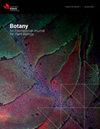Returning mistletoe to an urban forest: a restoration success story
IF 1.3
4区 生物学
Q3 PLANT SCIENCES
引用次数: 0
Abstract
Mistletoes have a fraught public relations history. Vilified as toxic tree-killing weeds, they have long been targeted for removal by arborists and forest managers concerned with tree health. Research on mistletoe ecology has revealed their positive influence on diversity and community structure via complex networks of interactions. In areas where mistletoe has traditionally been removed, managers are now asking whether they can return on their own or whether they should be reintroduced. To evaluate the practicalities of mistletoe restoration, we inoculated 28 London plane trees Platanus x acerfolia in inner Melbourne with Creeping Mistletoe Muellerina eucalyptoides, a locally rare species. Branch dimensions and aspect had no discernible effect on germination or seedling emergence, but trees where access to Brushtail Possums Trichosurus vulpecula was restricted were 30% more likely to host seedlings. Five years after inoculation, seven mistletoes successfully established on five trees, with two mistletoes bearing fruit. Communications with residents and city users elicited positive feedback, catalysing four additional inoculation trials in urban and forest settings elsewhere. In addition to representing a cost-effective means of enhancing habitat values, mistletoe restoration is useful for addressing questions about mistletoe ecology and educating the community about the functional roles these parasitic plants play.让槲寄生重回城市森林:一个成功的恢复故事
槲寄生有一段令人担忧的公关历史。它们被认为是有毒的杀树杂草,长期以来一直是关心树木健康的树木学家和森林管理者的清除目标。槲寄生生态学研究揭示了槲寄生通过复杂的相互作用网络对群落多样性和群落结构的积极影响。在传统上已经移除槲寄生的地区,管理人员现在正在考虑是否可以自行返回,或者是否应该重新引入槲寄生。为了评估槲寄生恢复的可行性,我们在墨尔本市中心的28棵伦敦梧桐树(Platanus x acerfolia)上接种了当地罕见的爬树槲寄生Muellerina eucalyptus。枝条的尺寸和形态对种子萌发和幼苗出苗没有明显的影响,但在接触毛鼠的树木中,寄主幼苗的可能性增加了30%。接种5年后,7株槲寄生在5棵树上,其中2株结果。与居民和城市用户的沟通得到了积极的反馈,促使在其他地方的城市和森林环境中进行了另外四次接种试验。槲寄生的恢复除了是提高生境价值的一种经济有效的方法外,还有助于解决有关槲寄生生态学的问题,并向社区宣传这些寄生植物的功能作用。
本文章由计算机程序翻译,如有差异,请以英文原文为准。
求助全文
约1分钟内获得全文
求助全文
来源期刊

Botany
生物-植物科学
CiteScore
2.20
自引率
9.10%
发文量
48
期刊介绍:
Botany features comprehensive research articles and notes in all segments of plant sciences, including cell and molecular biology, ecology, mycology and plant-microbe interactions, phycology, physiology and biochemistry, structure and development, genetics, systematics, and phytogeography. It also publishes methods, commentary, and review articles on topics of current interest, contributed by internationally recognized scientists.
 求助内容:
求助内容: 应助结果提醒方式:
应助结果提醒方式:


